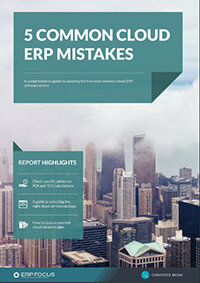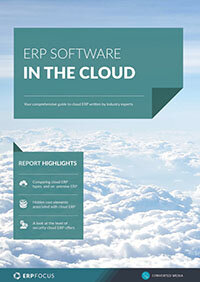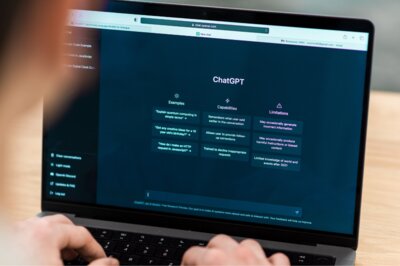The Rise of User-Centricity: 5 Outstanding ERP Trends from 2013
Welcome to the #ERPchat Tour - bringing you the best discussion and expert opinion from #ERPchat on Twitter. The #ERPchat Tour encourages the ERP community to engage with topics being discussed at #ERPchat by touring the best of each chat around ERP software blogs. If you are interested in hosting the next #ERPchat Tour on your blog or guest hosting the next chat on Twitter, tweet us @ERPfocus.
As the new year approaches you will find more “2014 ERP trends” articles than you can shake a stick at. With #ERPchat 15, we thought that we would be different and take a look back at what we have learn’t about the ERP software market in 2013.
User-Centric Systems
The overriding trend from this year appears to be the shift towards more user-centric systems. Over the past year, the ERP user has sat pretty upon their litter, faithfully carried by their triumphed servants of cloud platforms, social collaboration, mobility and BYOD.
Cloud Platforms
Perhaps the worst kept secret of the year, cloud ERP has begun to finally fulfill its billing. Of course, it will always be naive to rule out traditional on-premise platforms, but the ERP vendor’s figures do not lie. In Q3 results, SAP reported a 6% increase in cloud subscription revenue and a staggering 146% increase in cloud subscription and support revenue. Tier 2 vendors also saw boosts to cloud revenue in Q3 with UNIT4 reporting 40% increases in SaaS and subscription revenue. Despite this boost in popularity, whether these rises are due to customer demand or vendor focus remains to be seen.
#ERPChat As a supplier of #SageERP we are noticing an increased trend in Cloud ERP as the client sees reduced costs & easily managed
— Pinnacle_SageBP (@Pinnacle_SageBP) November 27, 2013
Social Collaboration
We have already covered the rise of social collaboration among ERP systems, but what made this ERP trend stand out this year was its influence on user-centricity. Social collaboration relies on user-centric features such as mobility and customizable interfaces - when social collaboration becomes popular, so do they.
#ERPchat - there's also the notion of social ERP and the convergence of collaboration and Business Intelligence.
— Mantralogix (@Mantralogix) November 27, 2013
Mobility
Few ERP trends can claim to have disrupted the market more than mobility in 2013. From the security issues raised by the introduction of BYOD to the entirely new product suites such as SAP Fiori, mobile ERP has altered the ERP landscape to one which encourages user engagement on the move. The key issue here is whether ERP vendors can keep up with the demand for mobility without sacrificing the efficiency or security of their current products.
Mobile #ERP allows executives access to information easily & quickly, wherever/ whenever they can, so they're becoming active users #ERPchat
— Sage ERP X3 (@sageerpx3) November 27, 2013
BYOD
BYOD, the spawn of the mobile ERP trend. If you tell your employees that their job can be done on mobile devices, they are damn well going to want to use their own devices. This user-centric philosophy has a whirlwind of arguments for and against. It lowers employers costs short-term. Security issues may cost more long term. It increases employee engagement. It increases employee training time. With BYOD it almost seems that for every positive, there is an equal and opposite negative. The true test will be which side caves first during 2014.
BYOD, mobile devices, tablets etc. are all becoming more active components to ERP #ERPchat - trend towards ERP on-the-go
— Blue Link Associates (@BlueLinkERP) November 27, 2013
The move to user-centric systems is undoubtedly the trend of 2013, but whether this trend has improved market products overall remains to be seen. We have seen the development of interesting products such as Infor Ming.le and SAP Fiori, but the success of these still depends on establishing a foundation with volatile functionality such as mobile and BYOD. 2014 should be an interesting year.
This article was based on discussion from #ERPchat on Twitter for more information, follow @ERPfocus.
Free white paper

ERP Software Pricing Guide
Get the latest pricing information on over 80 popular ERP systems, and learn how to budget for your ERP project in our free guide

Featured white papers
-

Five common cloud ERP mistakes
Get your comprehensive guide to avoiding the five most common cloud ERP errors
Download -

Related articles
-

Intelligent ERP systems: What AI can (and can’t) do
What AI in ERP really means for buyers in 2025
-

CMMC Compliance: What Aerospace and Defense Manufacturers Need to Know
Key insights on CMMC compliance, deadlines, and securing DoD contracts with CMMC 2.0 certificatio...
-
![Mobile ERP case studies you can learn from [Image by javi indy on Freepik] Mobile ERP case studies you can learn from [Image by javi indy on Freepik]](/pictures/W1siZiIsIjIwMjQvMTAvMTYvejB2YnNremFyX01vYmlsZV9FUlBfY2FzZV9zdHVkaWVzX3lvdV9jYW5fbGVhcm5fZnJvbV9JbWFnZV9ieV9qYXZpX2luZHlfb25fRnJlZXBpa18uanBnIl0sWyJwIiwidGh1bWIiLCI0MDB4MjY2IyJdLFsicCIsImVuY29kZSIsImpwZyIsIi1xdWFsaXR5IDg1Il1d/Mobile%20ERP%20case%20studies%20you%20can%20learn%20from%20%5BImage%20by%20javi%20indy%20on%20Freepik%5D.jpg?sha=d39d01df11779155)
Mobile ERP case studies you can learn from
Learn how mobile ERP has benefited three businesses...

